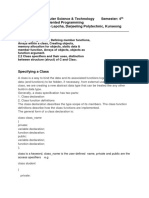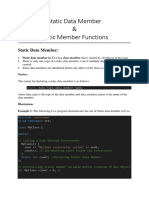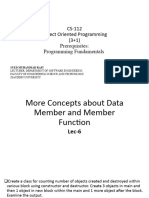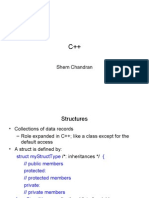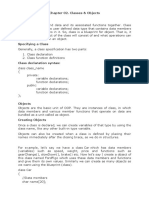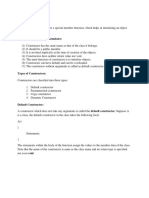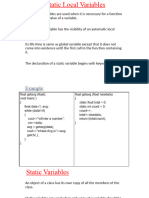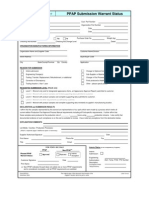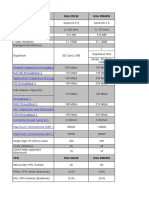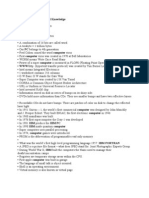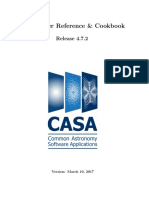0% found this document useful (0 votes)
69 views19 pagesArrays With in A Class: Const Int Size 10 Class Array (Int A (Size) Public: Void Setval (Void) Void Display (Void) )
1. The document discusses static data members and static member functions in C++ classes. Static data members are shared by all objects of the class and stored separately from the objects. Static member functions can access only static members and are called using the class name instead of object instances.
2. An example demonstrates defining and initializing a static data member outside the class, and accessing it through objects and with the class name. Static members follow usual access rules but are shared across all class objects.
3. Static members are used to maintain values common to the entire class. Their type and scope must be defined outside the class. They exist even if no class objects are created.
Uploaded by
bobsumitCopyright
© Attribution Non-Commercial (BY-NC)
We take content rights seriously. If you suspect this is your content, claim it here.
Available Formats
Download as PPT, PDF, TXT or read online on Scribd
0% found this document useful (0 votes)
69 views19 pagesArrays With in A Class: Const Int Size 10 Class Array (Int A (Size) Public: Void Setval (Void) Void Display (Void) )
1. The document discusses static data members and static member functions in C++ classes. Static data members are shared by all objects of the class and stored separately from the objects. Static member functions can access only static members and are called using the class name instead of object instances.
2. An example demonstrates defining and initializing a static data member outside the class, and accessing it through objects and with the class name. Static members follow usual access rules but are shared across all class objects.
3. Static members are used to maintain values common to the entire class. Their type and scope must be defined outside the class. They exist even if no class objects are created.
Uploaded by
bobsumitCopyright
© Attribution Non-Commercial (BY-NC)
We take content rights seriously. If you suspect this is your content, claim it here.
Available Formats
Download as PPT, PDF, TXT or read online on Scribd
/ 19
